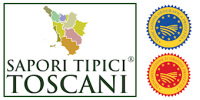Bagno Vignoni
One of the loveliest small villages around San Quirico d’Orcia, Bagno Vignoni has been known for its waters since the Etruscans and later the Romans. From 1100 until the end of the 13th century Bagno Vignoni was governed by the Tignosi family. Afterwards it passed under the jurisdiction of the Salimbenis along with all the small castles in the area. The Salimbeni family continued to rule over the area until 1417, when it passed into the hands of the city of Siena.
The village of Bagno Vignoni has survived miraculously unaltered through the centuries. The pool with the fabled thermal waters is still in the main square of the village, closed in on three of its four sides by a 1.5 metre high perimeter wall. Some of the buildings that look onto the square, such as the loggia where St Catherine of Siena is known to have come to take the waters, were designed by the architect Bernardo Rossellino. Another regular at the baths was the Piccolomini pope Pius II, who built an elegant villa in the square towards the middle of the 15th century. The villa survives today and has been converted into an elegant hotel.
Located on an area of flat ground that lies between Colle Vignoni and a meander of the river Orcia, the waters that feed the 16th century pool in Bagno Vignoni emerge from the soil at a temperature of over 50°C, which makes them particularly well suited for immersions, mud baths and inhalations, as well as for curing ailments such as breathing infections, gynaecological infections and rheumatic conditions.
In the past these waters also powered a series of mills further downriver. Known as the Parco dei Mulini, these mills have been carefully restored by the town of San Quirico d’Orcia and are today open to the public.
• Siena in the Renaissance
• Siena in the Middle Ages
• Siena in Antiquity
• Town Map Siena
• Farm Holidays and Country Houses
• Residence, Apartments
• Bed & Breakfasts
• Historical Residences
• Last Minute Siena
• Restaurants
• Pubs & Wine Bar
• University for Foreigners
• Palazzo Chigi-Saracini
• Palazzo d’Elci degli Alessi
• Loggia della Mercanzia
• Palazzo Sansedoni
• Palazzo Chigi-Zondadari
• Fonte Gaia fountain
• Carthusian Monastery of Pontignano
• Forte di Santa Barbara
• The Duomo – The Cathedral of the Assunta
• Church of the Osservanza
• The Oratory of San Bernardino
• Church of San Francesco
• Short Biography of St Catherine of Siena
• St Catherine Sanctuary
• Church of S. Niccolò al Carmine
• Bologna-Buonsignori museum
• Accademia dei Fisiocritici
• I Musei Senesi
• The Palazzo Pubblico and the Torre del Mangia
• Piazza del Campo
• The Montagnola Senese and the Fortified Village of Sovicille
• The Castles of Belcaro and Quattro Torri
• The July and August Palio
• The Contrade
• The Days of the Palio
• The Drappellone
• The Eve of the Palio
• The Corteo Storico Procession
• The Race
• The Patron Saint and Oratory of Each Contrada
• Weekly Appointments in each Contrada from April onwards
• Croce del Travaglio Place
• From Piazza del Campo to the Duomo Along Via di Città
• The Curves of Piazza del Campo
• Costarella dei Barbieri street
• Borgo d’Ovile
• The Terzo of Camollia – main streets
• Casato di Sopra e Casato di Sotto
• Terzo di San Martino district
• The Terzo di Città District - Via Stalloreggi, Via San Quirico
• The Terzo di Città District – The Pinacoteca Nazionale
• Golf courses in Siena and Tuscany
• Wedding in Tuscany - Siena area
• San Casciano dei Bagni
• Chianciano Terme
• Bagni San Filippo
• Bagno Vignoni
• Rapolano Terme - Baths of San Giovanni and Baths of the Antica Querciolaia
• The Countryside around Siena and its Thermal Water Springs
• SkiPass Monte Amiata
• WebCam sul Monte Amiata
• Meteo Monte Amiata
• The Val d’Orcia and Its Main Towns
• Pienza - the old town centre
• Montepulciano - the old town centre
• San Quirico d’Orcia - the old town centre
• Montalcino and the Land of Brunello
• The Abbey of Monte Oliveto Maggiore and the Crete
• The Crete Senesi
• Castellina in Chianti and the Via Chiantigiana Towards Siena
• Siena and Southern Chianti - from the Castle of Montalto to the Castle of Brolio and on to the Castle of Meleto
• The Chianti Hills - Monte Calvo, Monte Luco and Monte San Michele
• Cortona and the Valdichiana
• San Gimignano - The old town centre and its major sights
• The Val d’Elsa - Monteriggioni and Colle di Val d’Elsa
• Along the Old Via Francigena
• Oleum Evo online selling
• Sapori Tipici Italiani buy online now
• il Prosciutto Cotto









